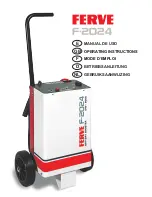
244
Car care
Tires
Your new vehicle comes with high-quality
tires made by a leading tire manufacturer. If
you ever have questions about your tire
warranty and where to obtain service, see
your Saab Warranty and Service Record
Booklet for details.
Inflation - Tire Pressure
The Tire-Loading Information label shows
the correct inflation pressures for your tires
when they’re cold. “Cold” means your vehi-
cle has been sitting for at least three hours
or driven no more than 1 mile (1.6 km).
Notice:
Don’t let anyone tell you that
underinflation or overinflation is all
right. It’s not. If your tires don’t have
enough air (underinflation), you can get
the following:
• Too much flexing
• Too much heat
• Tire overloading
• Bad wear
• Bad handling
• Bad fuel economy
If your tires have too much air (overinfla-
tion), you can get the following:
• Unusual wear
• Bad handling
• Rough ride
• Needless damage from road hazards
Adjust the tire pressure to match the current
load and speed of the car (see page 296).
The stated tire pressures apply to cold tires,
i.e. tires that are the same temperature as
the outside air temperature. Tire pressure
increases as the tires become warm (e.g.
during highway driving) by approximately
4 psi (28 kPa). When the temperature of the
tires changes by 50°F (10°C), the tire pres-
sure will change 2 psi (14 kPa).
Never reduce the pressure of a hot tire. If the
tires are hot when you check them, only
increase the pressure, if necessary.
WARNING
Poor maintained and improperly used
tires are dangerous.
• Overloading your tires can cause
overheating as a result of too much
friction. You could have an blow-out
and a serious accident. See “Loading
Your Vehicle” on page 254.
• Underinflated tires pose the same
danger as overloaded tires. The
resulting accident could cause serious
injury. Check all tires frequently to
maintain the recommended pressure.
Tire pressure should be checked
when your tires are cold.
• Overinflated tires are more likely to be
cut, punctured or broken by a sudden
impact – such as when you hit a pot-
hole. Keep tires at the recommended
pressure.
• Worn, old tires can cause accidents. If
your tread is badly worn, or if your tires
have been damaged, replace them.
93_US_M08.book Page 244 Friday, May 11, 2007 11:37 AM
Summary of Contents for 9-3 M2008
Page 60: ...60 Security This page has been left blank 93_US_M08 book Page 60 Friday May 11 2007 11 37 AM...
Page 278: ...278 Car care This page has been left blank 93_US_M08 book Page 278 Friday May 11 2007 11 37 AM...
Page 309: ...309 Notes Notes 93_US_M08 book Page 309 Friday May 11 2007 11 37 AM...
Page 310: ...310 Notes 93_US_M08 book Page 310 Friday May 11 2007 11 37 AM...
Page 311: ...311 Notes 93_US_M08 book Page 311 Friday May 11 2007 11 37 AM...
Page 312: ...312 Notes 93_US_M08 book Page 312 Friday May 11 2007 11 37 AM...
Page 313: ...313 Notes 93_US_M08 book Page 313 Friday May 11 2007 11 37 AM...
Page 314: ...314 Notes 93_US_M08 book Page 314 Friday May 11 2007 11 37 AM...
Page 315: ...315 Notes 93_US_M08 book Page 315 Friday May 11 2007 11 37 AM...
Page 316: ...316 Notes 93_US_M08 book Page 316 Friday May 11 2007 11 37 AM...
Page 317: ...317 Notes 93_US_M08 book Page 317 Friday May 11 2007 11 37 AM...
Page 318: ...318 Notes 93_US_M08 book Page 318 Friday May 11 2007 11 37 AM...
Page 319: ...319 Notes 93_US_M08 book Page 319 Friday May 11 2007 11 37 AM...
Page 320: ...320 Notes 93_US_M08 book Page 320 Friday May 11 2007 11 37 AM...
















































